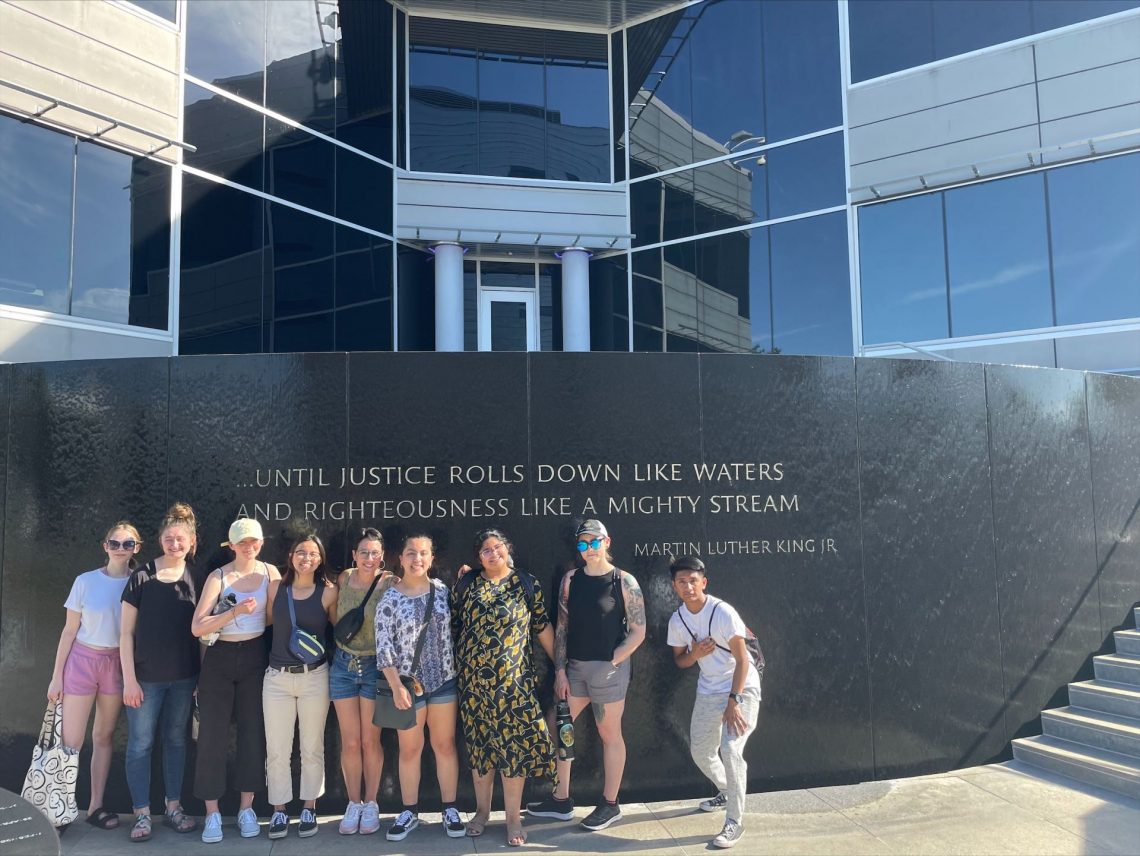Tuesday, May 10, 2022
A special treat of our time in Montgomery is a dinner hosted by our Resurrection Catholic Mission hosts with current leaders in the work for racial and social justice in Montgomery and people who are veterans of the Civil Rights movement of the 50s and 60s. It’s a gift to hear from people like Mr. Nelson Malden, Dr King’s barber and friend, and Deacon Williams, one of many people who became drivers for the thousands of African-Americans in Montgomery during the 1955 bus boycott.
I had the opportunity to sit at a table with Mary and Jeffrey Reese. Mary shared growing up in Montgomery during the 60s and how much of the history of marches, meetings, and civil rights victories, as well as segregation and intimidation from white supremacists felt almost normal since it was just what she knew growing up in that place and time. The day of the famous Selma to Montgomery march for voting rights, she and her mom walked out the door of their home and joined the crowd of 25,000. It was hard to hear Dr King speak in that large of a crowd but she was there as a 9-year old girl for a moment that I was learning about in museums and in past history textbooks. She also told us about her sister who was in college at Alabama State at the time, getting involved in some of the student organizing for civil rights. She was at a church for a meeting one night when the students got news that they may be in danger from a white mob. They had to lock themselves in the church and hide in the basement, but luckily the attack didn’t end up happening. Reading about the number of church and home bombings and killings of organizers of the time, I was awed at the calmness that Mary shared this story. Her sister and her family understood the risk but that it was what happened at the time. She expressed that while to me this was history, to her, it was her reality of growing up and the only one she knew.
I have been pausing to reflect since then about where I might be walking in steps of future history. Where if I walk out my front door, I could walk into a movement for justice. Where I could accept the risks, different from the 60s but risk of some form, and accept those for the work that must be done. The civil rights movement was not just one or two powerful leaders but a movement of ordinary people doing extraordinary things in community. There is much left to be done and that can begin, as it did for Mary, walking out into a community of people fighting for justice.
-Tyler Wagner












